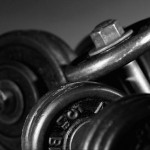It’s so easy to skip workouts! Before we know it, five other “responsibilities” have usurped our once preciously guarded exercise time. Then days become weeks, weeks become months, and so on. Before we know it, we’re asking ourselves “It can’t be six months since I’ve been to the gym…can it?” Enlisting the help of others to hold us accountable is a great method to sticking with our wellness plan. Having others to check in with and report back to, in a sense, renews or creates our health as a priority.
So here’s how to do it:
Form an accountability group to stay on pace to reach your workout goals! Similar to the Mastermind Principle that has been around for decades, and sometimes also referred to as a Think Tank or Advisory Board, an accountability group is simply a group with a health and wellness focus or base of principle. There’s one prerequisite to becoming a member in an accountability group; being able to handle honest and constructive feedback. Can you handle it?
Step 1. When searching for others to invite to your group choose those who bring something different than you do to the table. The first step is to write down a list of all the qualities you will bring to the group. For example, you are always willing to try new exercise classes, you like to participate in community events and you are really good about finding new healthful recipes to try.
Step 2. The next step is to write down aspects of health and wellness for which you need support. For example, your Friday workouts tend to be forgotten. And maybe that early morning spin class has been on your list to try for months, but has yet to happen. Perhaps your healthy eating down fall is heading for the vending machine at 3pm for a candy bar to get through the remainder of your work day.
Step 3. The third step is to compose a list of friends, coworkers, etc who are successful at what you’ve not been. Or who you feel represent a well balanced health and fitness lifestyle. Someone who not only talks the talk, but who walks the walk will inspire other members to do the same. Someone who possesses qualities you respect and admire. For example, invite one who balances children and competitive running; invite one who has had success in weight loss while working full time. Invite another who successfully manages a chronic illness while teaching fitness classes. Since a secondary purpose of the group is to provide a functional health and wellness network, consider that as well when inviting members. For example, if a member is looking for a dietician, the participant who’s successfully lost weight could possibly offer a referral. If a member is looking for a health club, another can provide a solid referral, and so on.
Step 4. The final step is to create the basics of your meeting. Holding regular meeting times helps set the pattern of your group. The frequency is up to the members and how in depth the goals of the members. Designate a facilitator, either rotating or a single person for a set period of time much like a Board of Advisory functions will maintain structure. Follow the same format each meeting to maintain order and stay on task. The goal is to listen more than you talk. Each response should stay on point, with the facilitator bringing the group and conversation back into focus when topic strays. Posting a roundtable question is also a diplomatic approach to brainstorm solutions. Keep tabs on the trend of the conversation (negative thoughts, self-sabotage, not taking responsibility.)
Step 5. A final consideration toward creating your group is to designate a member who maintains writing down goals and questions for discussion. Writing down goals forces members to be accountable for what was said and agreed upon. The bottom line goal of a Health Accountability Group is to learn from one another, as well as to build a network for one another.
If you’ve ever felt frustrated or unmotivated on your journey to wellness, you are not alone! Find others to share your challenges with, and most importantly to share solutions!
 Subscribe
Subscribe








